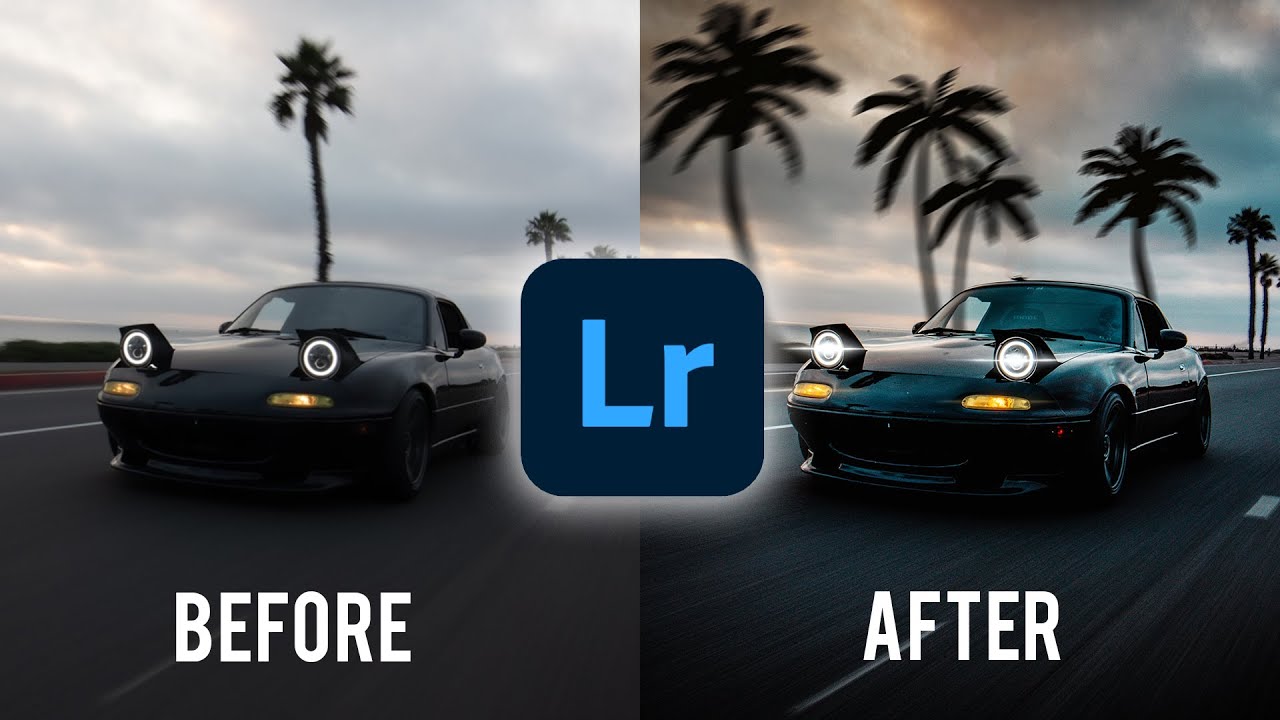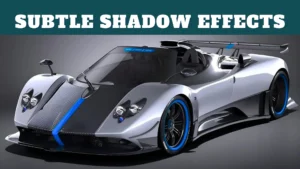If you’re passionate about cars and photography, then you’ve come to the right place. In this comprehensive guide, we will take you through the art of perfecting car photography by mastering Photoshop editing techniques.
Whether you’re a professional photographer or an amateur enthusiast, this guide will equip you with the necessary skills to capture stunning images of cars and transform them into works of art with the help of Photoshop.
With step-by-step instructions and expert tips, you’ll learn how to enhance the colors, adjust the lighting, remove imperfections, and create captivating compositions that will make any car enthusiast’s heart skip a beat. From choosing the right equipment to understanding the importance of angles and reflections, this guide covers it all.
Join us on this exciting journey to elevate your car photography skills. By the end of this guide, you’ll be able to confidently showcase the beauty and power of cars through your lens and Photoshop expertise. Get ready to unlock your creative potential and capture mesmerizing shots that will leave viewers in awe. Let’s dive in!
Table of Contents
ToggleBasic Photoshop editing techniques for car photography
Editing plays a crucial role in car photography as it allows photographers to enhance the visual appeal of their images and bring out the full potential of the subject. While capturing a great shot is important, post-processing in Photoshop takes it to the next level. It allows you to fine-tune the details, correct any imperfections, and create a polished look that will make your car photographs stand out.
In car photography, editing can make a significant difference in the outcome. It enables you to adjust the colors, contrast, and saturation to create a vibrant and eye-catching image. Additionally, it allows you to remove distractions, clean up the background, and emphasize the key features of the car. By mastering Photoshop editing techniques, you’ll have the power to transform an ordinary car photograph into a breathtaking masterpiece.
Editing also offers creative possibilities to add special effects and enhance the overall mood of the image. You can experiment with different styles, filters, and textures to give your car photographs a unique and artistic touch. With the right editing techniques, you can create stunning compositions that evoke emotions and tell a compelling story.

Advanced Photoshop editing techniques for car photography
When it comes to car photography, there are several basic Photoshop editing techniques that every photographer should be familiar with. These techniques will help you enhance the overall quality of your images and bring out the best in your subjects.
1. Cropping and Straightening: Cropping allows you to remove any unnecessary elements from the frame and focus on the main subject. Straightening helps correct any tilted horizons or angles, ensuring a balanced composition.
2. Adjusting Exposure: Exposure refers to the brightness or darkness of an image. In Photoshop, you can use the Exposure adjustment tool to fine-tune the exposure levels and bring out the details in your car photographs.
3. Color Correction: Colors play a vital role in car photography. With Photoshop, you can adjust the white balance, saturation, and hue to achieve the desired color tones. This will help you create a consistent and visually appealing look across your car photographs.
4. Sharpening and Noise Reduction: Sharpening enhances the details and crispness of your car photographs, while noise reduction minimizes any unwanted grain or noise. These techniques are essential for creating sharp and clear images.
5. Selective Editing: Selective editing allows you to make adjustments to specific areas of your car photograph. With Photoshop’s selection tools, you can target specific parts of the car, such as the body, wheels, or headlights, and make precise edits.
6. Cloning and Healing: Cloning and healing tools in Photoshop help you remove imperfections, such as scratches, dust, or unwanted reflections, from your car photographs. These tools are essential for achieving a clean and polished look.
By mastering these basic Photoshop editing techniques, you’ll be able to significantly improve the quality of your car photographs and lay the foundation for more advanced editing techniques.
Enhancing colors and contrast in car photographs
Once you have a good grasp of the basic editing techniques, it’s time to dive into more advanced Photoshop techniques that will take your car photography to the next level. These techniques will allow you to unleash your creativity and create stunning visuals that leave a lasting impression.
1. Composite Editing: Composite editing involves combining multiple images to create a unique and visually striking composition. This technique is often used in car photography to showcase different angles, perspectives, or environments. With Photoshop, you can seamlessly blend multiple images and create a cohesive final result.
2. Digital Painting: Digital painting is a technique that allows you to add artistic elements to your car photographs. You can enhance the details, add textures, or create custom effects to give your images a painterly look. Photoshop offers a variety of brushes and tools that enable you to unleash your creativity and transform your car photographs into works of art.
3. Advanced Retouching: Advanced retouching techniques involve more complex edits to remove any imperfections and enhance the overall appearance of the car. This includes advanced cloning, healing, and frequency separation techniques to achieve a flawless look. With Photoshop, you can meticulously retouch every detail and create a polished final image.
4. HDR Imaging: HDR (High Dynamic Range) imaging is a technique that allows you to capture a wider range of tones and details in your car photographs. By combining multiple exposures, you can create a final image that showcases the highlights and shadows in a balanced manner. Photoshop offers powerful HDR tools that enable you to merge and tone-map multiple exposures for stunning results.
5. Creative Effects: Photoshop provides endless possibilities for adding creative effects to your car photographs. From vintage looks to futuristic styles, you can experiment with different filters, overlays, and blending modes to achieve unique and captivating effects. These creative touches will help you create a signature style and make your car photographs truly stand out.
By exploring these advanced Photoshop editing techniques, you’ll have the tools to push the boundaries of your creativity and create car photographs that leave a lasting impact.
Removing imperfections and distractions in car photographs
One of the key aspects of car photography is capturing vibrant colors and enhancing the contrast to make the car stand out. In Photoshop, there are several techniques you can use to achieve this desired effect.
1. Adjusting Levels and Curves: Levels and Curves adjustments in Photoshop allow you to fine-tune the tonal range of your car photographs. By adjusting the highlights, shadows, and midtones, you can enhance the overall contrast and make the colors pop.
2. Selective Color Correction: Selective color correction enables you to adjust the individual color channels in your car photographs. This allows you to fine-tune the saturation and hue of specific colors, making them more vibrant or subtle as desired.
3. Gradient Maps: Gradient maps are a powerful tool in Photoshop that allows you to apply different color gradients to your car photographs. By using gradient maps, you can create unique and dramatic color effects that enhance the mood and visual impact of your images.
4. Color Balance: Color balance adjustments enable you to fine-tune the overall color cast of your car photographs. By adjusting the levels of red, green, and blue, you can achieve a more balanced and visually appealing color palette.
5. Dodge and Burn: Dodge and burn techniques involve selectively lightening or darkening specific areas of your car photographs. This allows you to enhance the three-dimensionality of the car and create a more dynamic and captivating image.
By utilizing these techniques, you’ll be able to enhance the colors and contrast in your car photographs, giving them a vibrant and visually striking look.
Adding special effects and creative elements to car photographs
To create a polished and professional look in your car photographs, it’s essential to remove any imperfections or distractions that may detract from the main subject. Photoshop offers a range of tools and techniques to accomplish this.
1. Spot Healing: Spot healing is a quick and effective way to remove small imperfections, such as dust spots or minor blemishes, from your car photographs. With a simple brush stroke, Photoshop intelligently samples the surrounding pixels and seamlessly blends them to remove the imperfection.
2. Clone Stamp: The clone stamp tool allows you to duplicate a specific area of your car photograph and apply it to another area. This is useful for removing larger imperfections, such as scratches or unwanted reflections. By cloning a clean area and blending it with the imperfection, you can achieve a clean and seamless result.
3. Content-Aware Fill: Content-Aware Fill is a powerful tool in Photoshop that automatically analyzes the surrounding pixels and fills in the selected area with similar content. This tool is particularly useful for removing larger distractions, such as objects or people in the background.
4. Perspective Correction: Perspective correction enables you to correct any distortion or perspective issues in your car photographs. This is especially important when photographing cars from different angles or capturing wide shots. With Photoshop’s perspective crop tool, you can straighten the lines and correct any distortion, resulting in a more visually pleasing image.
By utilizing these tools and techniques, you can remove imperfections and distractions from your car photographs, creating a clean and professional look that highlights the beauty of the car.
Tips for efficient and effective car photo editing workflow
Adding special effects and creative elements to your car photographs can take them to the next level and make them truly unique. Photoshop provides a wide range of tools and techniques to achieve this.
1. Lighting Effects: Photoshop’s lighting effects allow you to simulate different lighting conditions and add a touch of drama to your car photographs. From soft glows to dramatic spotlights, you can experiment with different lighting effects to create a captivating atmosphere.
2. Grunge and Texture Overlays: Grunge and texture overlays can add depth and character to your car photographs. By applying different textures or grunge overlays, you can create a vintage or edgy look that enhances the overall mood and style of the image.
3. Motion Blur and Speed Effects: Motion blur and speed effects can add a sense of movement and dynamism to your car photographs. With Photoshop’s motion blur filter, you can simulate the feeling of speed and capture the energy of the car in a still image.
4. Reflections and Shadows: Reflections and shadows are important elements in car photography. Photoshop allows you to enhance or create reflections and shadows to give your car photographs a more realistic and captivating look. By manipulating the opacity and blending modes, you can achieve a natural and visually striking result.
5. Creative Filters and Blending Modes: Photoshop offers a wide range of creative filters and blending modes that allow you to experiment with different looks and styles. From vintage effects to futuristic overlays, you can apply various filters and blending modes to create a unique and captivating image.
By incorporating these special effects and creative elements into your car photographs, you can add a personal touch and make them truly stand out from the crowd.
Resources for learning Photoshop editing techniques for car photography
To ensure a smooth and efficient car photo editing workflow, it’s essential to establish a systematic approach. Here are some tips to help you streamline your editing process:
1. Organize Your Files: Before you start editing, make sure your files are properly organized and labeled. This will save you time and make it easier to locate specific images or resources when needed.
2. Create a Backup: Always create a backup of your original files before making any edits. This ensures that you have a copy of the untouched image in case anything goes wrong during the editing process.
3. Batch Processing: If you have a series of similar car photographs, consider using batch processing techniques. This allows you to apply the same edits to multiple images simultaneously, saving you time and effort.
4. Use Keyboard Shortcuts: Familiarize yourself with Photoshop’s keyboard shortcuts to speed up your editing process. By using shortcuts for common tasks, you can work more efficiently and navigate through the software more effectively.
5. Experiment and Save Versions: Don’t be afraid to experiment with different editing techniques and styles. Make sure to save different versions of your edits, so you can compare and choose the one that best suits your vision.
6. Take Breaks: Editing can be a time-consuming process, so it’s important to take breaks to rest your eyes and clear your mind. This will help you maintain focus and prevent fatigue, allowing you to make better editing decisions.
By following these tips, you can establish an efficient and effective car photo editing workflow that maximizes your productivity and ensures high-quality results.
Conclusion: Elevating your car photography with Photoshop editing techniques
If you’re looking to further enhance your Photoshop editing skills for car photography, there are several resources available that can help you expand your knowledge and expertise:
1. Online Tutorials and Courses: Many online platforms offer tutorials and courses specifically tailored to Photoshop editing for car photography. These resources provide step-by-step instructions and practical examples to help you master various techniques and concepts.
2. YouTube Channels and Video Guides: YouTube is a treasure trove of free tutorials and video guides on Photoshop editing for car photography. From beginner-friendly tutorials to advanced techniques, you can find a wide range of content to suit your learning needs.
3. Photography Forums and Communities: Joining photography forums and communities allows you to connect with fellow photographers and exchange knowledge and tips. These platforms often have dedicated sections for Photoshop editing, where you can learn from experienced photographers and seek feedback on your work.
4. Photography Workshops and Seminars: Attending photography workshops and seminars is an excellent way to learn from industry professionals and gain hands-on experience. These events often cover a wide range of topics, including Photoshop editing techniques for car photography.
5. Books and eBooks: There are many books and eBooks available that focus specifically on Photoshop editing techniques for car photography. These resources provide in-depth explanations and examples to help you master the art of editing car photographs.
By exploring these resources, you can continuously refine your Photoshop editing skills and stay up-to-date with the latest techniques and trends in car photography.










